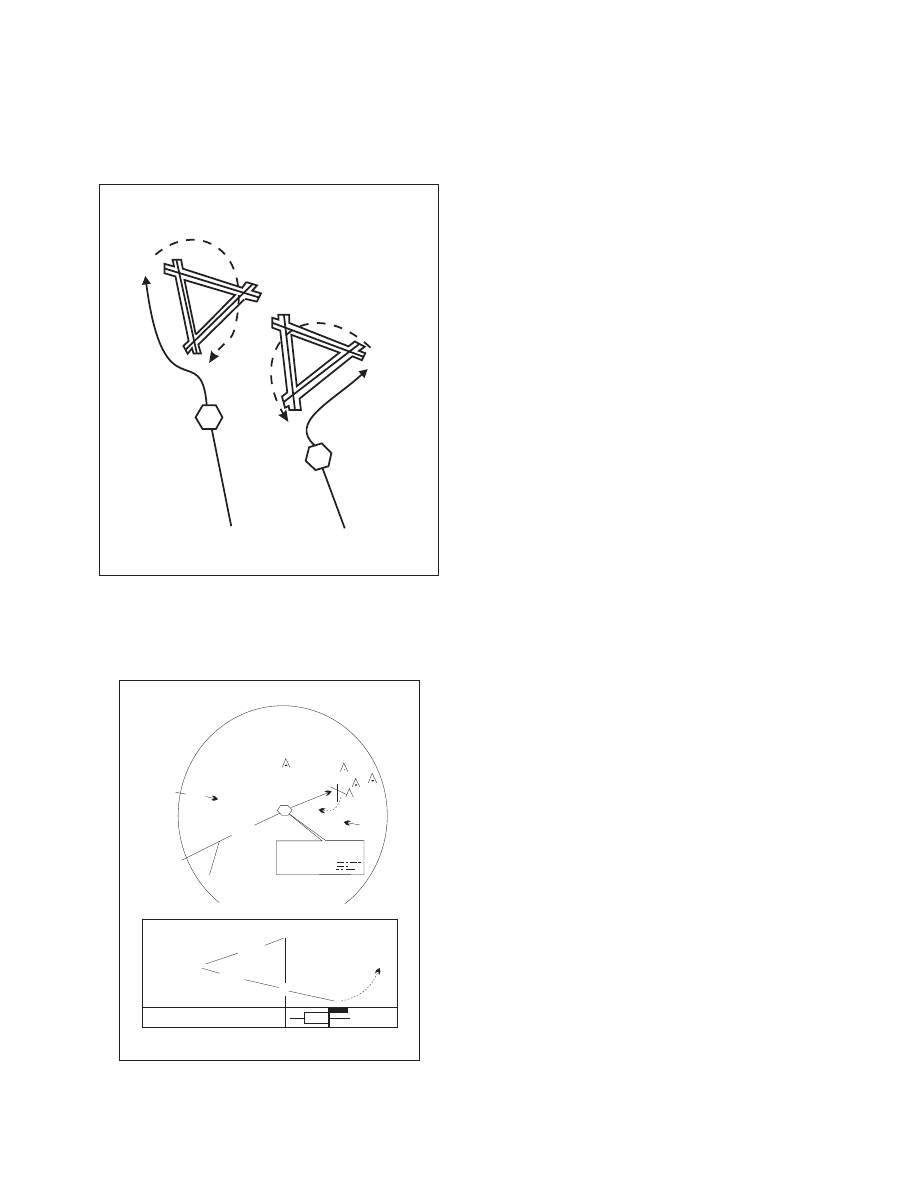
AIM
4/3/14
5−4−56
Arrival Procedures
FIG 5
−4−30
Circling and Missed Approach Obstruction
Clearance Areas
X
X
CLIMBING TURN
CLIMBING TURN
DECISION TO MISS
HERE
DECISION
TO MISS HERE
VOR
VOR
CIRCLING
MANEUVER
(WHEN
CLEARED IN
RIGHT HAND
TRAFFIC
PATTERN)
FIG 5
−4−31
Missed Approach
x
CHANUTE
109.2 CNU
090°
1450
1265
1581
1180
1172
Portion of a Published Procedure
Remain within
10 NM
VOR
MISSED APPROACH
Climbing right turn to
2600 direct to VOR
2600
236°
056°
2500
5.7 NM
R236
056°
011°
191°
h.
A clearance for an instrument approach
procedure includes a clearance to fly the published
missed approach procedure, unless otherwise
instructed by ATC. The published missed approach
procedure provides obstacle clearance only when the
missed approach is conducted on the missed
approach segment from or above the missed approach
point, and assumes a climb rate of 200 feet/NM or
higher, as published. If the aircraft initiates a missed
approach at a point other than the missed approach
point (see paragraph 5−4−5b), from below MDA or
DA (H), or on a circling approach, obstacle clearance
is not necessarily provided by following the
published missed approach procedure, nor is
separation assured from other air traffic in the
vicinity.
In the event a balked (rejected) landing occurs at a po-
sition other than the published missed approach
point, the pilot should contact ATC as soon as pos-
sible to obtain an amended clearance. If unable to
contact ATC for any reason, the pilot should attempt
to re−intercept a published segment of the missed ap-
proach and comply with route and altitude
instructions. If unable to contact ATC, and in the pi-
lot’s judgment it is no longer appropriate to fly the
published missed approach procedure, then consider
either maintaining visual conditions if practicable
and reattempt a landing, or a circle−climb over the
airport. Should a missed approach become necessary
when operating to an airport that is not served by an
operating control tower, continuous contact with an
air traffic facility may not be possible. In this case, the
pilot should execute the appropriate go−around/
missed approach procedure without delay and contact
ATC when able to do so.
Prior to initiating an instrument approach procedure,
the pilot should assess the actions to be taken in the
event of a balked (rejected) landing beyond the
missed approach point or below the MDA or DA (H)
considering the anticipated weather conditions and
available aircraft performance. 14 CFR 91.175(e)
authorizes the pilot to fly an appropriate missed
approach procedure that ensures obstruction clear-
ance, but it does not necessarily consider separation
from other air traffic. The pilot must consider other
factors such as the aircraft’s geographical location
with respect to the prescribed missed approach point,
direction of flight, and/or minimum turning altitudes
in the prescribed missed approach procedure. The
pilot must also consider aircraft performance, visual